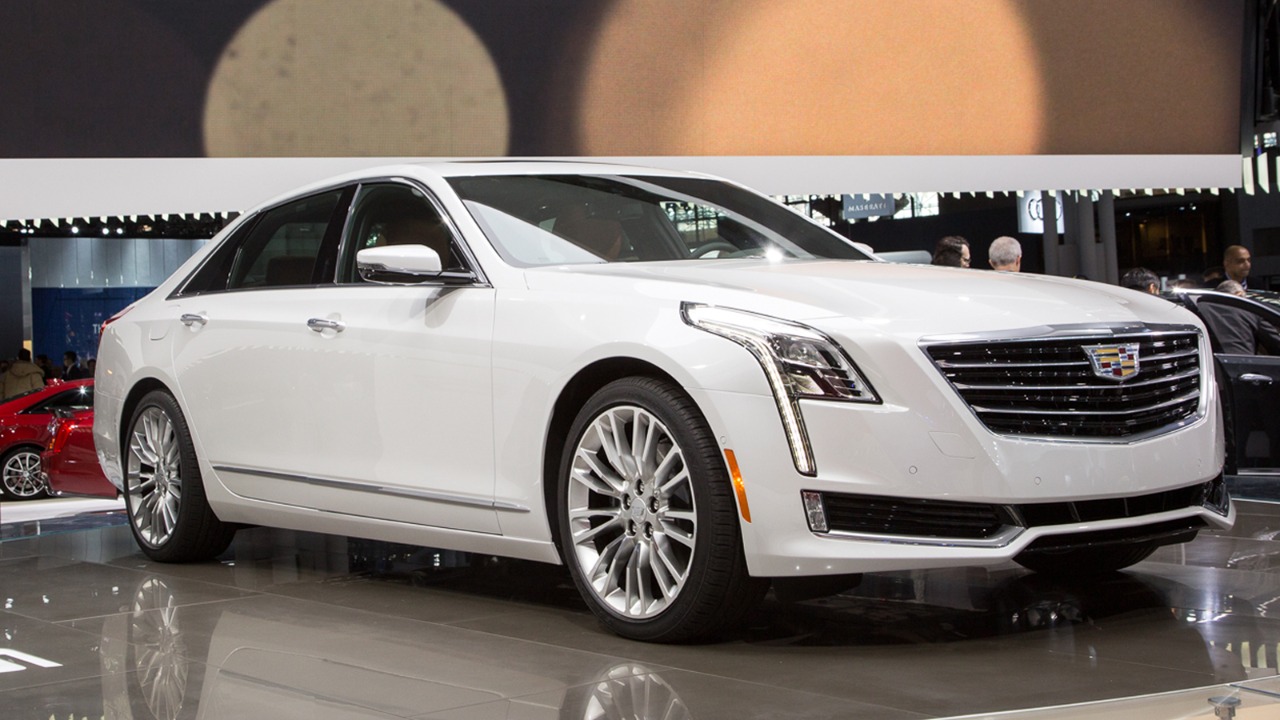
General Motors has recently acknowledged a significant misstep in its strategic decisions by expressing regret over discontinuing the Cadillac CT6 luxury sedan in North America. This admission came from GM’s President, who labeled the decision as a mistake, highlighting the CT6’s potential to compete against luxury giants like BMW and Mercedes-Benz. The CT6, once a flagship model for Cadillac, was phased out due to shifting market dynamics and internal priorities, leaving a notable gap in GM’s luxury lineup. This reversal underscores the broader challenges GM faces in its luxury vehicle strategy as it considers potential revivals or replacements to regain its competitive edge.
The Cadillac CT6’s Original Role and Launch
Launched in 2016, the Cadillac CT6 was introduced as General Motors’ flagship full-size luxury sedan, designed to challenge European competitors in the North American market. The CT6 was equipped with advanced technology, including the innovative Super Cruise, a hands-free driver assistance feature, and a spacious interior tailored for executive buyers. These features positioned the CT6 as a cornerstone of Cadillac’s global luxury ambitions, aiming to elevate the brand’s prestige and market share. The initial vision for the CT6 was to establish Cadillac as a formidable player in the luxury segment, leveraging its technological advancements and design to attract discerning customers.
Despite its promising start, the CT6 struggled to maintain its footing in a market increasingly dominated by SUVs and crossovers. The sedan’s launch was part of a broader strategy to revitalize Cadillac’s image and compete head-to-head with established luxury brands. However, the shifting consumer preferences towards larger, more versatile vehicles posed a significant challenge to the CT6’s success. This context set the stage for the eventual discontinuation of the model, as GM reevaluated its priorities in response to evolving market demands.
Reasons Behind the 2020 Discontinuation
The decision to discontinue the Cadillac CT6 after the 2020 model year was driven by several factors, primarily the declining sedan sales in North America. As consumer preferences shifted towards SUVs and crossovers, sedans like the CT6 faced dwindling demand, prompting GM to reassess its product lineup. This market pressure was compounded by internal decisions within GM to prioritize electrification and higher-volume vehicles over low-selling luxury sedans. The strategic pivot aimed to align GM’s offerings with broader industry trends, focusing on electric vehicles and models with greater sales potential.
However, this decision overlooked the CT6’s potential in premium segments, where it could have continued to compete effectively against rivals. The move to discontinue the CT6 was seen as a strategic oversight, as it removed a key player from Cadillac’s lineup that could have bolstered the brand’s presence in the luxury market. The reporting on the discontinuation highlights how GM’s focus on immediate market trends may have led to a missed opportunity in maintaining a competitive edge in the luxury sedan segment.
GM Leadership’s Admission of Regret
In a recent interview, GM’s President candidly stated that “killing the Cadillac CT6 was a mistake,” acknowledging the missed sales and brand prestige that the model could have contributed. This admission reflects a rare moment of introspection from a major automaker, as GM publicly recognized the strategic error in discontinuing the CT6. The regret is further underscored by the CT6’s strong performance in China, where it continues to succeed, contrasting sharply with its North American outcomes. This disparity highlights the potential the CT6 had to thrive in luxury markets, had it been given the chance to evolve and adapt.
The public acknowledgment of this mistake by GM’s leadership is significant, as it underscores the challenges automakers face in balancing market demands with strategic foresight. The decision to discontinue the CT6 was initially seen as a necessary adjustment to align with consumer trends, but the subsequent reflection reveals the complexities involved in making such pivotal choices. This admission serves as a reminder of the importance of maintaining a diverse product lineup that can cater to various market segments, even as industry trends shift.
Implications for Cadillac’s Future Lineup
Given GM’s expressed regret over the CT6’s discontinuation, there is speculation about potential revival options for a successor model. The ongoing demand for luxury vehicles in North America presents an opportunity for GM to reintroduce a CT6-like model that could bolster Cadillac’s premium positioning. As the competitive landscape continues to evolve, with rivals gaining ground in the full-size sedan segment, Cadillac’s focus on electric vehicles like the Celestiq may need to be complemented by offerings that cater to traditional luxury buyers.
Recent reflections from GM suggest that reinstating a model similar to the CT6 could enhance Cadillac’s standing in the luxury market. The potential revival of a flagship sedan would not only address the gap left by the CT6 but also reinforce Cadillac’s commitment to delivering high-quality, technologically advanced vehicles. As GM navigates its future strategy, the lessons learned from the CT6’s discontinuation will likely inform its approach to balancing innovation with market demands, ensuring that Cadillac remains a competitive force in the luxury automotive industry.
The decision to potentially revive a CT6 successor underscores the dynamic nature of the automotive industry, where consumer preferences and technological advancements continually reshape the landscape. For GM, the challenge lies in crafting a product lineup that not only meets current market demands but also anticipates future trends, ensuring that Cadillac remains a leader in the luxury segment. As the company considers its next steps, the legacy of the CT6 serves as both a cautionary tale and a source of inspiration for future innovations.